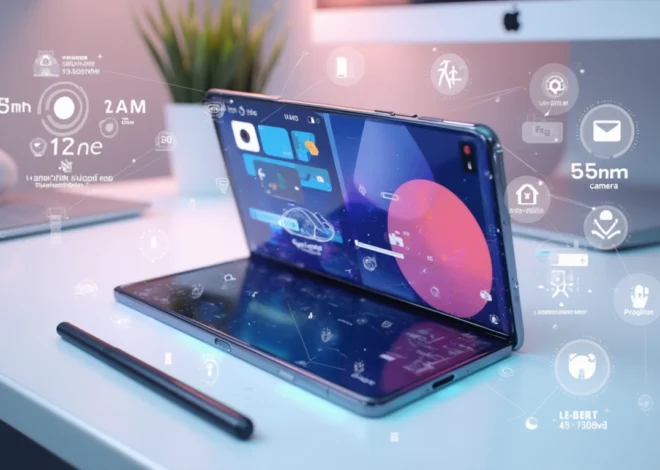
Intel CEO Pat Gelsinger Retires: Semiconductor Giant Faces Leadership Transition
Intel’s semiconductor landscape is undergoing a significant shift with the announcement of CEO Pat Gelsinger’s retirement. This unexpected move comes at a crucial juncture for the tech giant, as it navigates challenges in the competitive chip manufacturing industry.
Key takeaways:
- Pat Gelsinger to retire on December 1, 2024, after over 40 years at Intel
- Interim leadership appointed: David Zinsner and Michelle Johnston Holthaus as Co-CEOs
- Intel facing recent challenges, including a 15% workforce reduction
- Board forms search committee to find a permanent successor
- Intel shares jumped 4% in premarket trading following the announcement
Table of Contents
Pat Gelsinger’s Legacy at Intel
Pat Gelsinger’s career at Intel spans over four decades, starting in 1979. He held various pivotal roles, including becoming the company’s first chief technology officer. Gelsinger returned to Intel as CEO in 2021 during a critical period for the company. His leadership was instrumental in revitalizing process manufacturing and steering the company through turbulent times in the semiconductor industry.
Frank Yeary, Intel’s independent chair of the board, praised Gelsinger’s contributions: “Pat spent his formative years at Intel, then returned at a critical time for the company in 2021… As a leader, Pat helped launch and revitalize process manufacturing.” Gelsinger himself reflected on his tenure, stating, “Leading Intel has been the honor of my lifetime… I can look back with pride at all that we have accomplished together.”
Interim Leadership and CEO Search
With Gelsinger’s impending departure, Intel has appointed interim leadership to guide the company through this transition period. David Zinsner, Executive Vice President and Chief Financial Officer, and Michelle Johnston Holthaus, CEO of Intel Products, will serve as interim Co-CEOs. Frank Yeary will step into the role of interim Executive Chair.

The board of directors has formed a search committee to find a permanent successor for the CEO position. This leadership transition is crucial for Intel’s future, as the company aims to regain its competitive edge in the semiconductor manufacturing landscape. The search for a new CEO will likely focus on candidates who can navigate the complex challenges facing the industry and drive innovation in Intel’s foundry business.
Recent Challenges and Market Dynamics
Intel has faced several hurdles in recent times, necessitating tough decisions to reposition the company in the current market. Some of the notable challenges include:
- A 15% workforce reduction, affecting approximately 15,000 jobs, announced in August to streamline operations
- Reduction in federal funding for computer chip plants, impacting expansion plans
- Intensified competition from rivals like Nvidia and AMD in various chip markets
Despite these challenges, Intel has secured $3 billion in funding for military chip supply, demonstrating its continued relevance in critical sectors. The company’s shares experienced a positive uptick, jumping more than 4% in premarket trading following the retirement announcement, suggesting investor optimism about potential changes in leadership and strategy.
Intel’s Position in the Semiconductor Industry
As Intel navigates this leadership transition, it’s crucial to consider the company’s position in the broader semiconductor industry. The company has made several tough decisions to adapt to current market dynamics, including restructuring its workforce and refocusing its strategy on core competencies.
Intel’s struggles compared to rivals like Nvidia and AMD have highlighted the need for a renewed focus on innovation and manufacturing excellence. The company’s foundry services business, aimed at competing with industry leaders like TSMC, remains a key area for growth and development.
Looking ahead, Intel’s long-term strategy will likely involve doubling down on its strengths in semiconductor design and manufacturing while exploring new opportunities in emerging technologies. The incoming CEO will play a crucial role in shaping this strategy and steering Intel through the competitive landscape of the chip industry.
For businesses and individuals looking to stay updated on the latest in tech automation, including developments in the semiconductor industry, I recommend checking out Make.com. This powerful automation platform can help you streamline your workflow and stay on top of industry trends, which is especially valuable in fast-paced sectors like technology and manufacturing.
As Intel embarks on this new chapter, the semiconductor industry watches closely. The company’s ability to innovate, adapt, and lead in chip manufacturing will be critical factors in determining its future success in an increasingly competitive market.
Sources:
CBS News
WashingtonExec
TechCrunch
Bloomberg
Intel Newsroom


